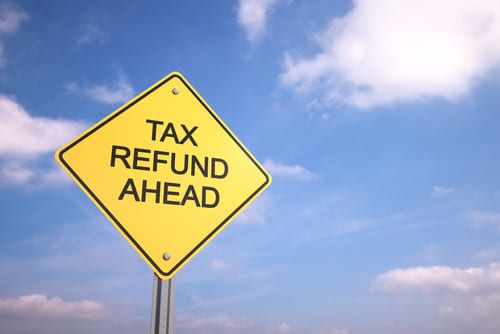How to Spend Your Tax Refund
The big financial question for Americans every spring: How should I spend my tax refund?
The Internal Revenue Service says most of you – somewhere between 75 and 80 percent – are getting one. The average tax refund in 2020 was $2,741. That is a financial windfall for anyone, but especially the half of American families who live on less than $68,703 a year, the median household income in the United States. For most of those people, a tax refund that big represents half the month’s take-home pay.
“The people for whom the refund is a significant amount of income should think carefully about how it is used,” Dr. Jonathan Parker, a professor at MIT’s Sloan School of Management, told Debt.org. “Sometimes the best thing is to use it right away on needed purchases like replacing car that is breaking down or replacing a dying furnace.
“If you don’t have an immediate need, the best bet is to use your refund to reduce or eliminate debt, especially credit card debt.”
Surveys show that 91 percent of people say they will use the refund to reduce debt or put into savings, but at least half spend the money shortly after receiving it and not on a needed or required purchase. They view a refund as “free money,” an unexpected bonus check from Uncle Sam that they can spend as they like.
“There is a spike in spending when a refund check arrives,” Parker said. “Weekly spending goes up the first week, especially in households with low income and very few assets. Think carefully about what you want to accomplish with the tax refund and be sure you end up doing what you planned.”
10 Ways to Spend Your Tax Refund Check
- Add to savings. This is the most common option, with 47 percent of refund checks going toward savings. This could mean adding to an emergency fund, starting a retirement fund or putting money aside for your children’s education.
- Put money toward a goal. This is more than just adding to savings. It’s saving up for a specific, short-term purpose. Start setting money aside for a financial goal like a new car, a summer vacation or a down payment on a home.
- Pay off debts. This is the second most common way to spend tax refunds, with 44 percent of refund recipients opting to pay off some debt. For many, this means paying off credit card balances, but it can also mean making an extra mortgage payment, paying off student loans or otherwise downsizing debt.
- Improve yourself. Have you always wanted to take a class at the local community college or earn certification in a work-related topic? Do it now, while you have extra cash on hand.
- Improve your home. Weatherize your home, complete a home improvement project or fix problems around the house. This has the added benefit of increasing your home’s value.
- Fix your car. Get any necessary repairs, get an oil change and replace your tires. Spending a little money now can prevent costly problems in the future.
- Travel abroad. This is a particularly good option if you’re still in school. By studying or traveling abroad, you can develop new and unique skills that could be valuable in life.
- Take extra classes. If you’re a student, consider using your tax return to pay for an extra class. The extra money could also allow you to cut back work hours to make room for additional coursework.
- Invest in your health. Use this opportunity to take care of yourself. Join a gym, visit the dentist or make an appointment with a chiropractor. You can never go wrong spending money on your health.
- Give money to a cause. If you’re one of the lucky few and have all of your financial needs covered, consider using your spare cash to help someone else. This can be anything from giving to a favorite charity to contributing to a relative’s college fund. Depending on what you do with the money, your gift may be tax-deductible.
Whatever you decide to do with your extra cash, use it wisely. It’s the best opportunity you have each year to set aside a big chunk of money for savings, paying bills or taking care of other financial expenses.
Sources:
- N.A. (2020, July 24) Filing Season Statistics for Week Ending July 24, 2020. Retrieved from https://www.irs.gov/newsroom/filing-season-statistics-for-week-ending-july-24-2020
- Semega, J.; Kollar, M.; Shrider, E.; Creamer, J. (2020, September 15) Income and Poverty in the United States: 2019. Retrieved from https://www.census.gov/library/publications/2020/demo/p60-270.html

